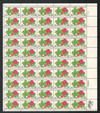
# 2014 - 1982 20c International Peace Garden
20¢ International Peace Garden
City: Dunseith, ND
Quantity: 183,270,000
Printed By: Bureau of Engraving and Printing
Printing Method: Lithographed and engraved
Perforations: 11
Color: Multicolored
International Peace Garden
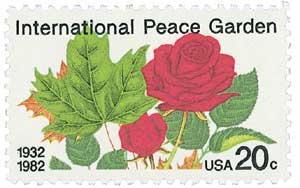
On July 14, 1932, the International Peace Garden was dedicated, representing the peaceful relationship between the United States and Canada.
Dr. Henry Moore was a member of Canada’s National Association of Gardeners and attended meetings in both Canada and the US. He sought a way to honor the long, peaceful relationship between the two nations and came up with the idea for a place “where the people of the two countries could share the glories found in a lovely garden and the pleasures found in warm friendships.”
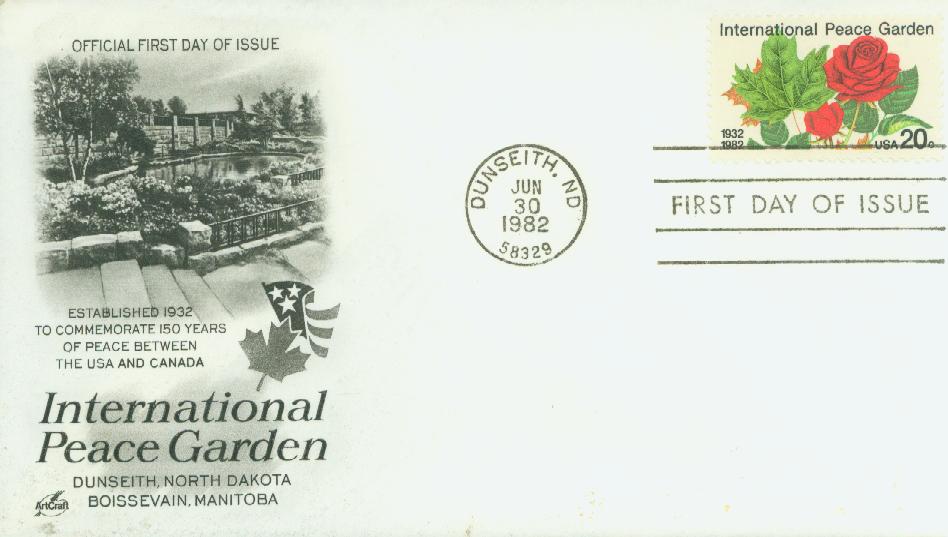
On September 17, 1930, the International Peace Garden, Inc. was established. Most of the early members were from the eastern US. The first contribution came from a young girl from Long Island, New York, who gave $1.
Dr. Moore was charged with finding a location for the garden. While flying over North Dakota, he spotted Turtle Mountain, named by the Cree Indians because viewed from above it resembles an enormous turtle. The eastern slope became the home of the International Peace Garden and is close to the geographic center of North America.
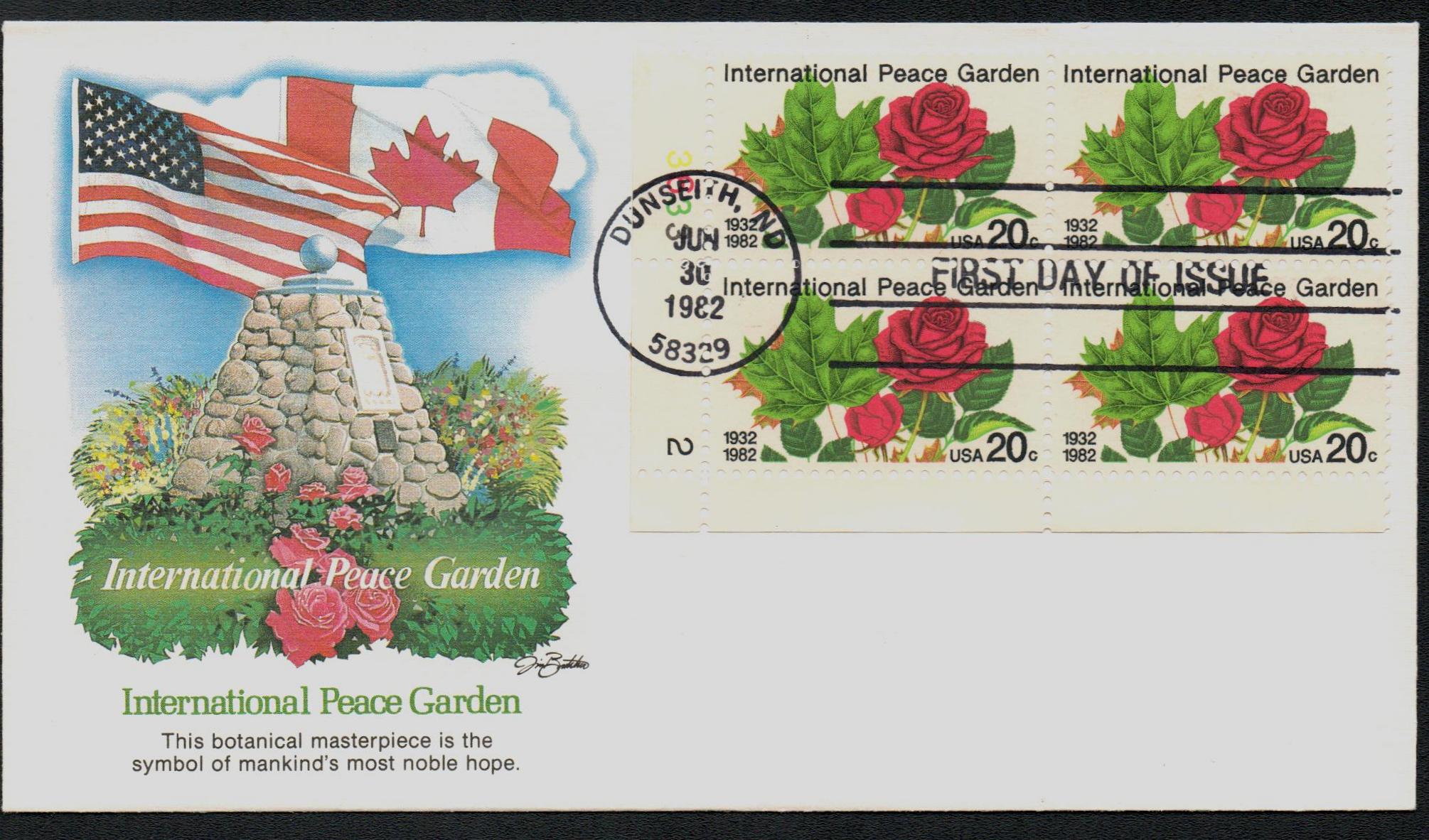
The garden’s dedication took place on July 14, 1932, and around 50,000 people attended. A cairn, a man-made pile of stones, was built to mark the border between North Dakota and the Canadian Province of Manitoba. A plaque was placed on the cairn, which says, “To God in His Glory, we two nations dedicate this garden and pledge ourselves that as long as men shall live, we will not take up arms against one another.” The US and Canadian flags flew on poles on either side of the small tower, in their respective countries.
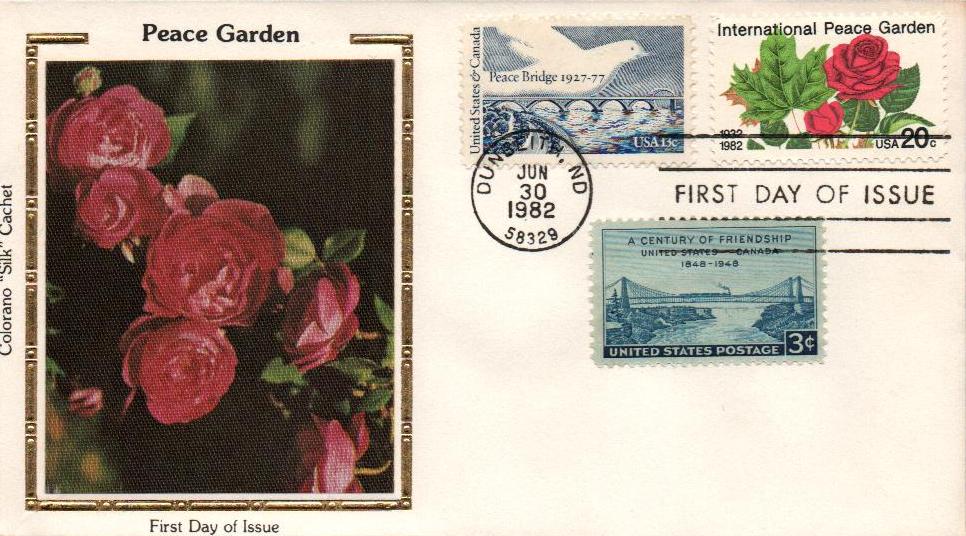
In the midst of the Great Depression, the US Civilian Conservation Corps (CCC) improved national parks throughout the country. A company from the CCC developed the garden. They built fences, cleared brush, and constructed the Lodge, the first building on the grounds. It was made of stone from North Dakota and logs from Manitoba. They also built two lakes, one on each side of the border.
At one point, a pair of 120-foot concrete towers straddled the border, with peace chapels at their bases. Each tower had notable quotes about peace carved into the walls. However, these towers were damaged by weather-related erosion and demolished in 2016.
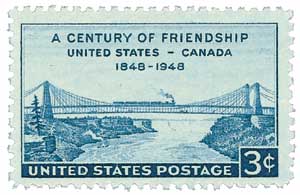
Other interesting features include an 18-foot floral clock display, fountains, and a 14-bell chime. Some building remains from the World Trade Center were also placed in the garden. There’s also the Masonic Auditorium, built in 1981 for the centennial of the Grand Lodges of Manitoba and North Dakota.
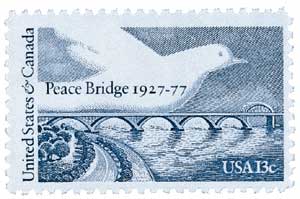
The International Peace Garden continues to flourish today. The park plants over 150,000 flowers every year. More than 150,000 people visit each year, to walk along the paths and absorb the sense of calm that’s felt throughout the garden. Over the years, plants and trees from around the continent and the world have been donated to the grounds, adding to the beauty of the location.
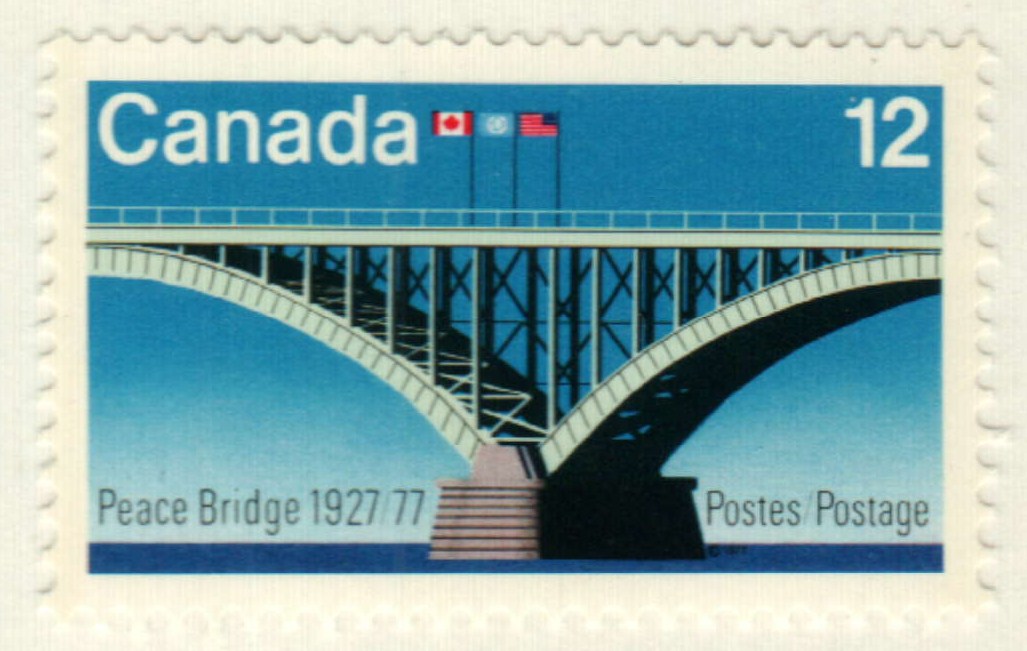
In 1956, North Dakota license plates were produced with the phrase “Peace Garden State” and in 1957 that was made the official state nickname.
Click here for photos and more from the International Peace Garden website.
20¢ International Peace Garden
City: Dunseith, ND
Quantity: 183,270,000
Printed By: Bureau of Engraving and Printing
Printing Method: Lithographed and engraved
Perforations: 11
Color: Multicolored
International Peace Garden

On July 14, 1932, the International Peace Garden was dedicated, representing the peaceful relationship between the United States and Canada.
Dr. Henry Moore was a member of Canada’s National Association of Gardeners and attended meetings in both Canada and the US. He sought a way to honor the long, peaceful relationship between the two nations and came up with the idea for a place “where the people of the two countries could share the glories found in a lovely garden and the pleasures found in warm friendships.”

On September 17, 1930, the International Peace Garden, Inc. was established. Most of the early members were from the eastern US. The first contribution came from a young girl from Long Island, New York, who gave $1.
Dr. Moore was charged with finding a location for the garden. While flying over North Dakota, he spotted Turtle Mountain, named by the Cree Indians because viewed from above it resembles an enormous turtle. The eastern slope became the home of the International Peace Garden and is close to the geographic center of North America.

The garden’s dedication took place on July 14, 1932, and around 50,000 people attended. A cairn, a man-made pile of stones, was built to mark the border between North Dakota and the Canadian Province of Manitoba. A plaque was placed on the cairn, which says, “To God in His Glory, we two nations dedicate this garden and pledge ourselves that as long as men shall live, we will not take up arms against one another.” The US and Canadian flags flew on poles on either side of the small tower, in their respective countries.

In the midst of the Great Depression, the US Civilian Conservation Corps (CCC) improved national parks throughout the country. A company from the CCC developed the garden. They built fences, cleared brush, and constructed the Lodge, the first building on the grounds. It was made of stone from North Dakota and logs from Manitoba. They also built two lakes, one on each side of the border.
At one point, a pair of 120-foot concrete towers straddled the border, with peace chapels at their bases. Each tower had notable quotes about peace carved into the walls. However, these towers were damaged by weather-related erosion and demolished in 2016.

Other interesting features include an 18-foot floral clock display, fountains, and a 14-bell chime. Some building remains from the World Trade Center were also placed in the garden. There’s also the Masonic Auditorium, built in 1981 for the centennial of the Grand Lodges of Manitoba and North Dakota.

The International Peace Garden continues to flourish today. The park plants over 150,000 flowers every year. More than 150,000 people visit each year, to walk along the paths and absorb the sense of calm that’s felt throughout the garden. Over the years, plants and trees from around the continent and the world have been donated to the grounds, adding to the beauty of the location.

In 1956, North Dakota license plates were produced with the phrase “Peace Garden State” and in 1957 that was made the official state nickname.
Click here for photos and more from the International Peace Garden website.









